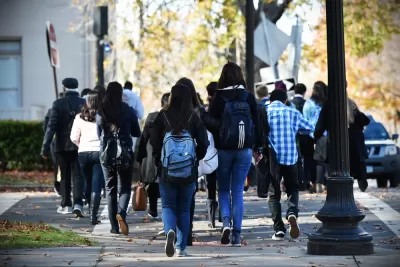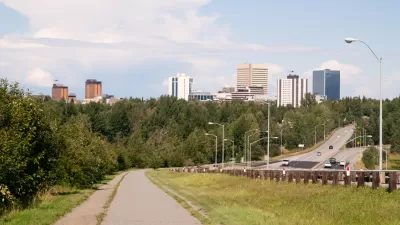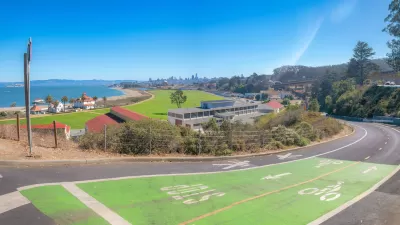The Transportation Alternatives program is designed to give states power over federal transportation funding for pedestrian and bike infrastructure projects. A loophole is defeating that purpose, however.

"Every year the federal government disperses a sliver of its transportation funds — about $800 million, or less than 2 percent of the total — to states expressly to support walking and biking," according to an article by Angie Schmitt.
How the states allocate those dollars is up to them, but some of them also choose to make use of a loophole "that allows states to divert up to half the funding from this program, known as Transportation Alternatives, to car infrastructure."
Schmitt reports that a growing number of states are diverting the Transportation Alternatives funding to road infrastructure that benefits automobile travel.
In the third quarter of 2016, ten states diverted TA funds for the first time: New York, Maryland, Massachusetts, New Jersey, Oregon, Rhode Island, Virginia, Arkansas, Kentucky, and Tennessee. New York has transferred $37 million out of the program; Maryland, $11 million; New Jersey, $7 million.
In addition to sharing the details of each state's use of the Transportation Alternatives funding, the article includes a call to action. "Advocates in some states have successfully fought attempts to loot TA funds," explains Schmitt.
FULL STORY: More States Are Looting Federal Funds for Walking and Biking

Planetizen Federal Action Tracker
A weekly monitor of how Trump’s orders and actions are impacting planners and planning in America.

Maui's Vacation Rental Debate Turns Ugly
Verbal attacks, misinformation campaigns and fistfights plague a high-stakes debate to convert thousands of vacation rentals into long-term housing.

Cuomo Is the Candidate of Both NIMBYs and Developers. What Gives?
In the New York City mayoral race, odd bedfellows align to preserve the housing status quo.

Amtrak Rolls Out New Orleans to Alabama “Mardi Gras” Train
The new service will operate morning and evening departures between Mobile and New Orleans.

The Subversive Car-Free Guide to Trump's Great American Road Trip
Car-free ways to access Chicagoland’s best tourist attractions.

San Antonio and Austin are Fusing Into one Massive Megaregion
The region spanning the two central Texas cities is growing fast, posing challenges for local infrastructure and water supplies.
Urban Design for Planners 1: Software Tools
This six-course series explores essential urban design concepts using open source software and equips planners with the tools they need to participate fully in the urban design process.
Planning for Universal Design
Learn the tools for implementing Universal Design in planning regulations.
Heyer Gruel & Associates PA
JM Goldson LLC
Custer County Colorado
City of Camden Redevelopment Agency
City of Astoria
Transportation Research & Education Center (TREC) at Portland State University
Jefferson Parish Government
Camden Redevelopment Agency
City of Claremont





























